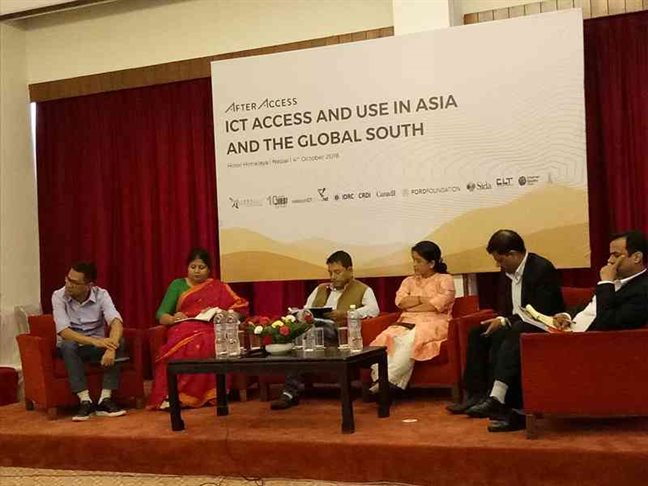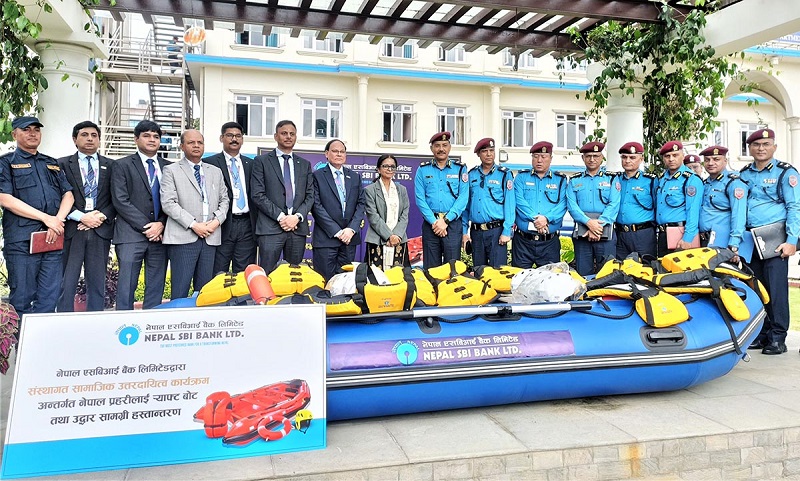Significant Potential For E-commerce In Nepal If Barriers Are Overcome
Significant potential for e-commerce in Nepal if barriers are overcome – AfterAccess report
THE AFTER ACCESS SURVEYS – RECENTLY LAUNCHED IN NEPAL BY A REGIONAL ICT POLICY THINK-TANK, LIRNEasia – PROVIDE PREVIOUSLY UNAVAILABLE STATISTICS REGARDING MOBILE AND INTERNET ACCESS AND USE IN THE COUNTRY.
Nepal performs better on Internet connectivity and mobile phone use than its wealthier neighbors in Asia, but not as well on e-commerce indicators, the research report said.
Seventy-two percent of the Nepali population aged 15-65 owned a mobile phone, according to the study. Sixty percent of these were Internet-enabled (feature or smartphone). Also, 46% of Nepali’s are aware of the Internet – the highest reported number out of the Asian countries included in the report: India, Pakistan, Myanmar Bangladesh, and Cambodia.
“There is a huge opportunity for e-commerce to develop in Nepal,” said Helani Galpaya, CEO of LIRNEasia, a regional ICT policy think-tank. “Stakeholders in the sector need to work together to improve awareness and help mobile financial services and e-commerce growth.”
Only 3% of mobile phone owners (the lowest percentage across all survey countries) said they had ever used a mobile phone to send or receive money. Only 26% of Nepal’s 15-65 Internet users said they were aware of at least one of the various platforms that respondents were asked about. Only 4% of this group said they used any of them. These numbers are lower than in most Asian countries surveyed.
The primary reason for not using the Internet was also lack of awareness.
The findings are part of AfterAccess, an international-award-winning effort to collect robust data on access to and use of mobile phones, the Internet, social media and online platforms in the Global South.
“The available information on mobile phones and the Internet is supply-side provided or not representative of national populations. That makes it insufficient for governments and other decision makers,” said Galpaya, who was the lead researcher for the Asia component. “The only meaningful way to understand the ground situation is by talking to users (and non-users) directly. This is what we have done with the AfterAccess surveys.”
The Nepal-specific results of the AfterAccess surveys were released by regional ICT-policy think-tank, LIRNEasia, in Kathmandu on October 4th, 2018. The release event was organized in partnership with ISOC Nepal and the Center for Law and Technology.
Speakers at the event included Anand Raj Khanal (Senior Director, Nepal Telecommunication Authority), Subhash Dhakal (Under Secretary, Ministry of Communication and Information Technology), Santosh Sigdel (President, ISOC Nepal), Rina Dangol(Nepal Telecom),Binaya Bohra (ISPAN Representative)Helani Galpaya (CEO, LIRNEasia) and moderator Ujjwal Acharya, Coordinator, IFJ South Asia.
“This report highlights key areas for development in our ICT sector,” said Babu Ram Aryal, Chairperson, Center for Law and Technology. “We must use this data to inform future policy, regulatory and industry decisions.”
In Nepal, 2,000 households and individuals were surveyed from 100 wards in eight provinces. The sampling methodology was designed to ensure representation of the target group (population aged 15-65) at a national level with a 95% confidence interval and a +/-3.3% margin of error.
The methodology used in Nepal is comparable across all 18 survey countries in Africa, Asia, and Latin America. The AfterAccess database is thus the most rigorous and comprehensive database on a mobile phone and Internet access and uses in the Global South. The current data includes information collected via 38,005 face-to-face interviews of households and individuals. The data allows for disaggregation by gender, rural or urban setting, and age among other factors.
This research was conducted with financial support from the International Development Research Centre (IDRC), Canada, the UK Government’s Department for International Development (DFID), the Ford Foundation and the Swedish International Development Cooperation Agency (SIDA).
Other key findings from the Nepal report:
- Nepali Internet users in the 15-65 age group had been online longer than in other Asian survey countries. The majority (78%) were online for over one year. Just 22% came online in the last year, compared to 33% of internet users in India, 53% in Pakistan and 43% in Cambodia.
- The gender gap in Internet use in Nepal was 33%, still better than that of its Asian peers, but similar levels to most of its economic peers included in the survey.
- Though 40% of Nepali Internet users aged 15-65 were content with their online experience, 29% said data cost was a limiting factor.
- Seventy-seven percent of Internet-enabled mobile owners (i.e., those that had either a smartphone or a feature phone with some Internet capabilities) used apps on their mobile. The majority of them said they use messaging/chat and social networking apps.
- Nepali Internet users aged 15-65 reported the lowest levels of online harassment among the survey countries. Only 4% said they had experienced it, compared to highs of 26% in Cambodia.
- There was a high level of trust in news seen on social media in Nepal, with 58% of 15-65 social media users saying they ‘trust’ this news, the highest level seen in any of the survey countries.






